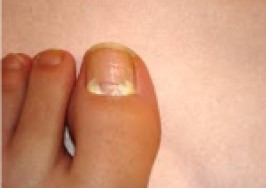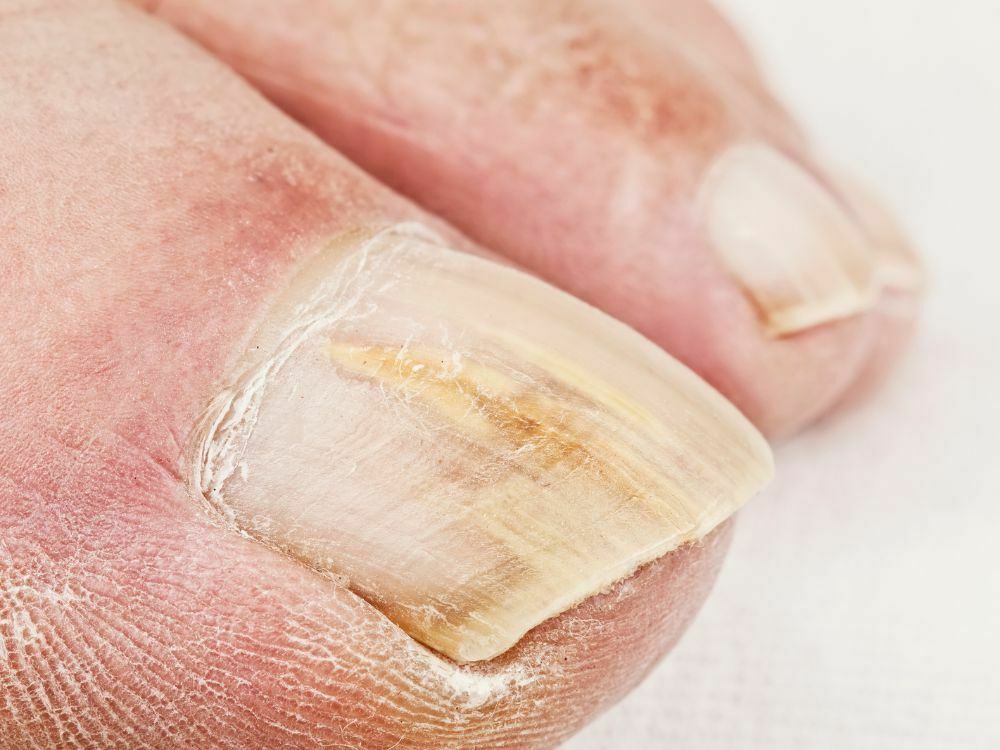Description of nail fungus

The most common cause of yellowed, thick and/or deformed toenails is a fungal infection of the toenail. The fungus that infects the nail, most commonly, is the same fungus that causes athlete’s foot. It tends to be slowly progressive, damaging the nail to a greater and greater degree over time.
The infection usually starts at the tip of the nail and works its way back. It usually is not painful and often not noticed until it has gotten well established. A single toenail or any number of nails can be affected. It can also occur on just one foot. Over time, the nail becomes thickened, crumbly, and distorted in appearance. Sweaty feet contribute to the initial infection process and contribute to its spread. The fungus prefers an environment that is moist, dark and warm, which is why it affects the toenails much more often than fingernails. It does not spread through the blood stream. The infection limits itself to the nails and skin. It is often found in association with areas of dry scaly skin on the bottom of the foot or between the toes. The dry scaling skin is frequently found to be chronic athlete’s foot. It is not highly contagious, and family members are almost as likely to contract it from some other source as they are from the family member who has the infection. Keeping common showering areas clean is recommended, and sharing shoes should be avoided.
Diagnosis of nail fungus
Not all thickened or yellowed toenails are caused by a fungal infection. Injury to a toenail can cause the toenail to grow in a thickened or malformed fashion, due to damage to the nail root. In these instances, treatment with anti-fungal medications will not correct the malformed nail. Other causes of thickened toenails are small bone spurs that can form under the toenail, and psoriasis.
Nail fungus treatment
It is best to treat as soon as the infection is noticed. An over-the-counter medication may suffice in early cases. In more developed cases, prescription drugs are necessary. Effective medications are available as an ointment, spray, or taken by mouth to treat onychomycosis. It may happen that the doctor recommends the excision of the nail.
It is also important to treat athlete's foot which often accompanies fungal nails. It is recommended to change slippers and shoes during the day in cases of heavy sweating. You can also get drugs that reduce sweating.
The information provided in this web site is not intended to be a substitute for medical examination, diagnosis or treatment. The material is provided for information purposes alone.

